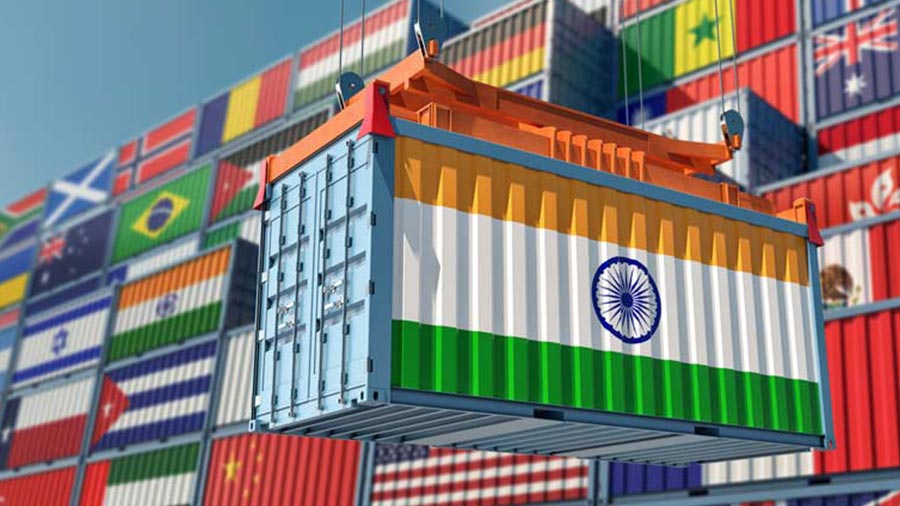The Global Trade Research Initiative (GTRI) has recommended a comprehensive review of India’s bilateral free trade agreements (FTAs), specifically focusing on the agreements with Singapore and Thailand. GTRI suggests that this evaluation should be carried out in conjunction with the broader Association of Southeast Asian Nations (ASEAN) bloc, highlighting the interconnected nature of regional trade dynamics.
Singapore’s Role in ASEAN:
Singapore, a member of the 10-nation ASEAN bloc, has been in a free trade agreement with India since 2010. Additionally, India and Singapore entered into a comprehensive FTA in 2005. The suggestion is to examine both agreements collectively, considering Singapore’s position within ASEAN.
Thailand’s FTA and ASEAN Connection:
Similarly, GTRI proposes a parallel assessment for Thailand, another ASEAN member. India and Thailand established a limited free trade pact in 2006, known as the early harvest scheme (EHS). This evaluation would align with the ongoing review of the broader India-ASEAN trade pact.
Context of ASEAN-India Trade Relations:
India and ASEAN have already committed to reviewing their trade pact, aiming to conclude the reassessment by 2025. The ASEAN bloc comprises Brunei Darussalam, Cambodia, Indonesia, Lao PDR, Malaysia, Myanmar, the Philippines, Singapore, Thailand, and Vietnam. Notably, five countries—Indonesia, Singapore, Malaysia, Thailand, and Vietnam—contribute significantly to India’s trade with ASEAN, accounting for 92.7% of exports and 97.4% of imports.
Trade Statistics:
India’s exports to ASEAN have shown substantial growth, increasing from $19.1 billion in 2008-09 to $44 billion in 2022-23. Conversely, imports from the ASEAN bloc rose to $87.6 billion in the last fiscal year, compared to $26.2 billion in 2008-09.
Unique Features of FTAs:
India’s separate FTAs with Singapore and Thailand are characterized by distinct features. The FTA with Singapore includes more relaxed rules of origin for products. The suggestion is to analyze these two FTAs together, recognizing the nuances in their terms.
Important Questions Related to Exams
Q: Why is the Global Trade Research Initiative (GTRI) suggesting a reevaluation of India’s bilateral FTAs with Singapore and Thailand?
A: GTRI recommends a reassessment to align India’s trade strategies and optimize economic partnerships, emphasizing the need to consider these bilateral agreements within the broader context of the ASEAN bloc.
Q: What is the background of India’s trade agreements with Singapore and Thailand?
A: India has a free trade agreement (FTA) with the 10-nation ASEAN bloc since 2010, which includes Singapore. Additionally, India implemented a separate comprehensive FTA with Singapore in 2005. A limited FTA was signed with Thailand in 2006 under the ‘early harvest scheme’ (EHS).
Q: Why is there a call to review the ASEAN-India trade pact by 2025?
A: India and ASEAN have mutually agreed to review their trade pact by 2025, recognizing the changing dynamics and the need for adjustments in the trading relationship. This review includes all ASEAN member countries.
Q: How significant are Indonesia, Singapore, Malaysia, Thailand, and Vietnam in India’s trade with ASEAN?
A: These five countries account for 92.7% of India’s exports and 97.4% of imports from ASEAN. The trade dynamics with these nations highlight the importance of a comprehensive review to ensure a balanced trade relationship.
Q: What are the key statistics indicating the growth in India’s trade with ASEAN?
A: India’s exports to ASEAN have increased from $19.1 billion in 2008-09 to $44 billion in 2022-23. Imports from the ASEAN bloc rose to $87.6 billion in the last fiscal year, compared to $26.2 billion in 2008-09.
Find More International News Here




 Operation Hawkeye: US and Jordan Strike ...
Operation Hawkeye: US and Jordan Strike ...
 India and the Netherlands Set Up Joint T...
India and the Netherlands Set Up Joint T...
 Brazil Hands Over BRICS Presidency to In...
Brazil Hands Over BRICS Presidency to In...







